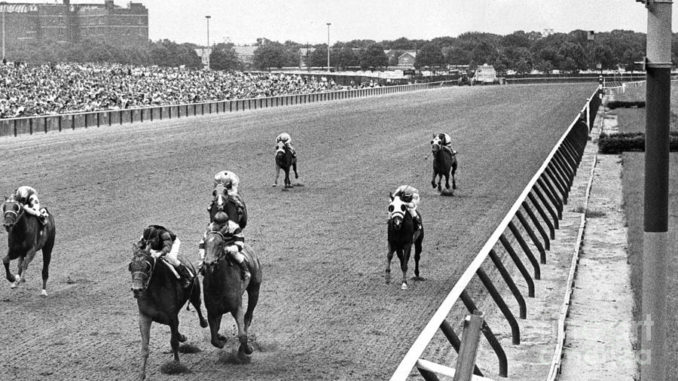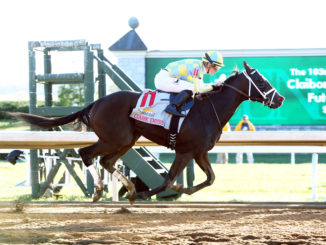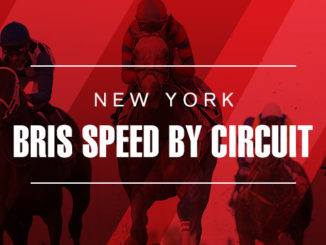
One hundred thirty years is a pretty good run for most things, but having something around that long in more or less the same form and it becomes that much harder to look at it the same way when a featured characteristic suddenly changes. Such is the case with the Suburban (G2) at Belmont Park on Saturday.
For its 131st running, the Suburban will cease being run under handicap conditions. Patterned after the City and Suburban Handicap at Epsom Downs in England (now a minor event compared to its 19th century heights), the Suburban now joins other stakes at NYRA and throughout the country as being run under allowance conditions, which are virtually handicaps themselves but without the conspicuous hand-wringing from horsemen about unfair imposts and spreads.
After reading years ago that John B. Campbell, the famed racing secretary and handicapper of the first half of the 20th century, referred to the Suburban as “America’s Greatest Race,” I adopted a similar view with close racing-oriented friends. Though done in a generally tongue-in-cheek manner, it was not difficult to see why Campbell believed what he did when you looked at the Suburban’s roster of winners and compared it with any other stakes across the country. Decades after Campbell’s death in 1954 the quality of the Suburban continued to hold up, and always seemed to find a way to revive itself even after some noticeably fallow periods.
However, the last 10 years or so have been pretty rough on Campbell’s pet favorite. A seemingly permanent demotion to a Grade 2 event by the American Graded Stakes Committee, a brief interlude (2010-13) as just another 1 1/8-mile race for older horses, and a relative lack of investment by NYRA has made what was once a must-see event every Independence Day into a mere supporting feature on a card highlighted by seven-figure grass stakes for three-year-olds.
The decision to increase the 2017 Suburban purse this year by 50 percent, from $500,000 to $750,000 (more than double what it was at the start of the decade), appears to be too little, too late as only six were entered for Saturday’s renewal. Of those just two have won at the Grade 1 level, and given the seeming lack of pace on paper there’s no guarantee either will add their name to an illustrious list of winners.
Besides the NYRA’s decision to invest more in the Metropolitan (G1) and Whitney (G1) following the AGSC’s decision, the reasons for the Suburban’s erosion are pretty straight forward. Limited campaigns with greater spacing between, for example, the Dubai World Cup (G1) and late summer features, have become the norm. And no matter how good your roster of winners may look historically and the prestige behind the name, the Suburban’s current Grade 2 designation has to be perceived as a knock against it no matter the purse.
Another thing working against the Suburban, to my eyes, is the 1 1/4-mile distance. While I loathed its nine-furlong incarnation, that brief shortening lent credence to the view (perhaps only perceived on my part) that there’s been a move in recent decades to enhance and emphasize nine-furlong events over 10-furlong ones for older horses outside a select few (i.e. the World Cup, Pacific Classic [G1] and Breeders’ Cup Classic [G1]). A generation ago the older star Alysheba ran six times over 1 1/4 miles in a single year. Five of those races he ran in still exist in some form but only three remain at a mile and a quarter. It’s as if America’s so-called classic distance is something to be asked of and tolerated only so much by the country’s best older dirt performers.
Fifty years ago this week the legendary Buckpasser added to an already lengthy list of laurels by bravely winning the Suburban under an impost of 133 pounds, giving 22 pounds to runner-up Ring Twice. What made that victory, the last in his storied career, so special was that both his sire (Tom Fool, 1953) and dam (Busanda, 1951) had also won the 1 1/4-mile contest. To my knowledge, a sire-dam-offspring triple has not been achieved in any other race of national significance.
There have obviously been memorable Suburbans and Suburban winners since, but that edition neatly encapsulates what the Suburban once was and, with this latest change in identity, is unlikely to be again.



